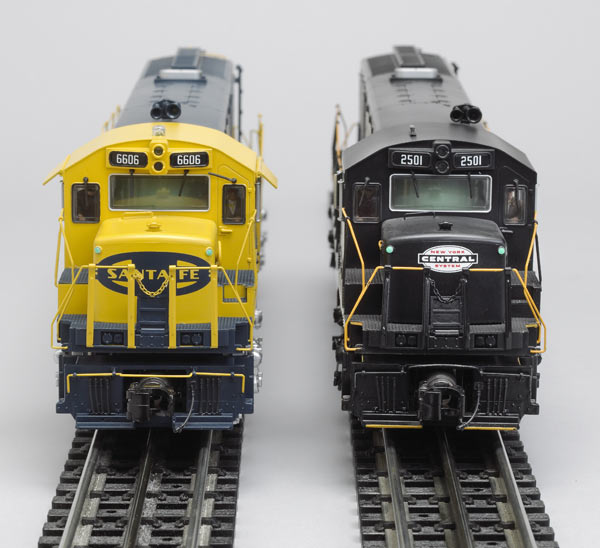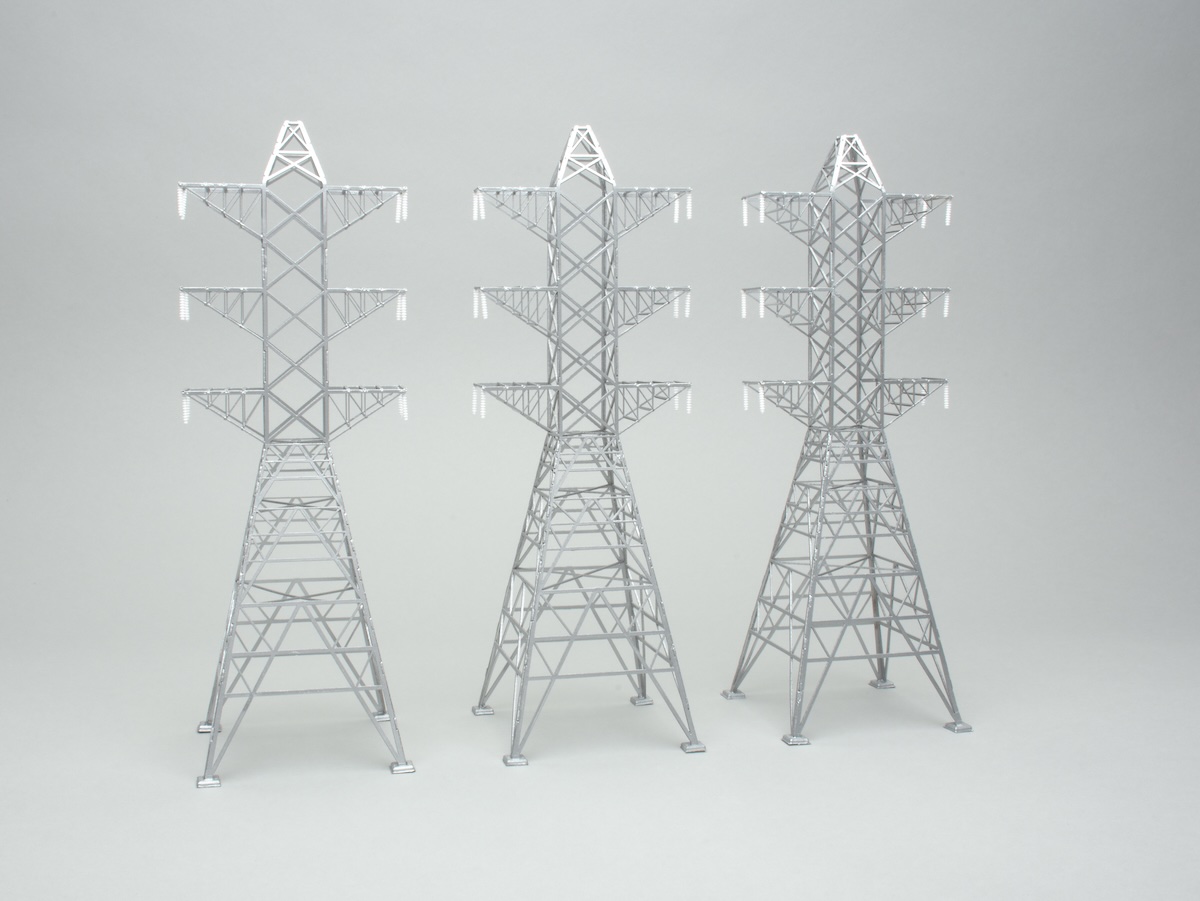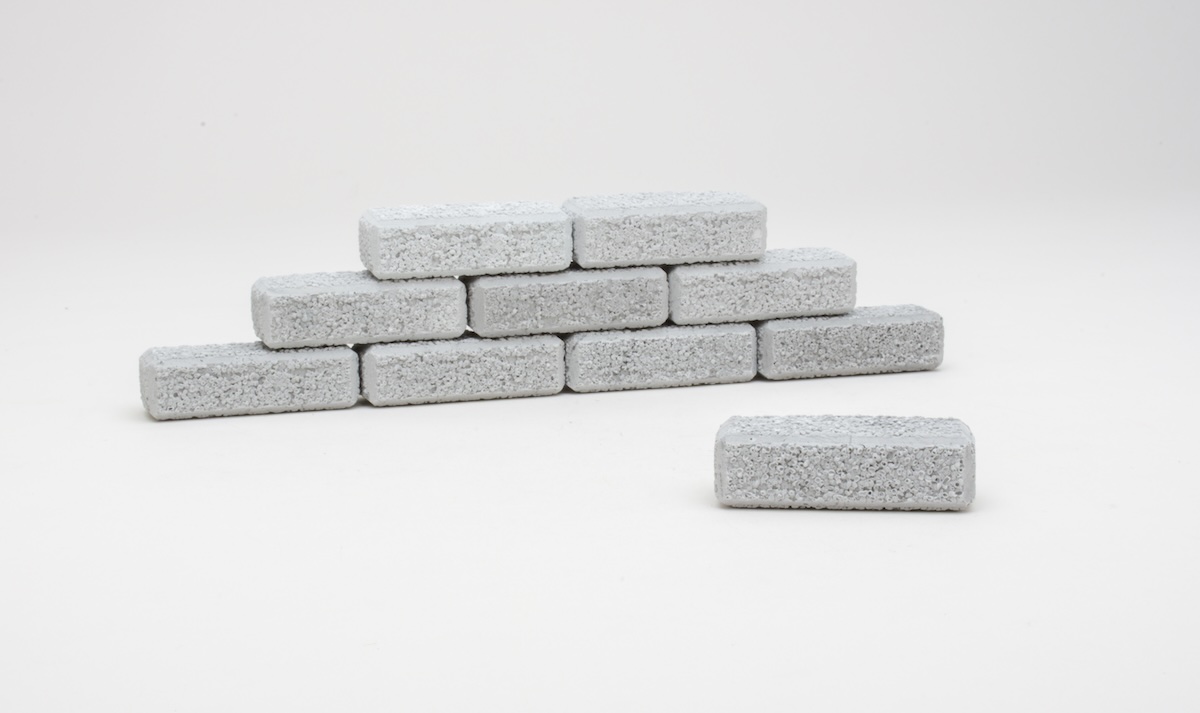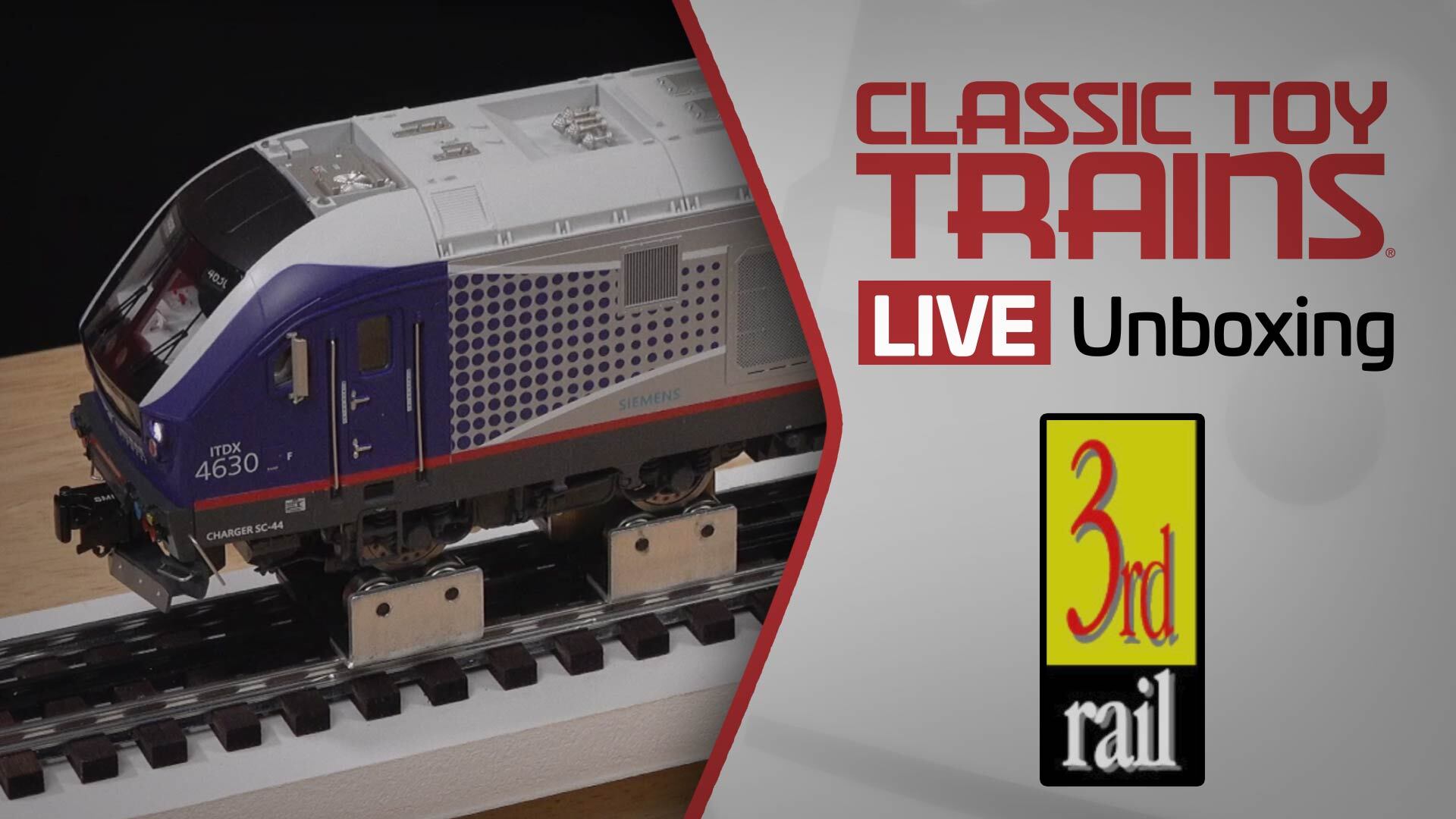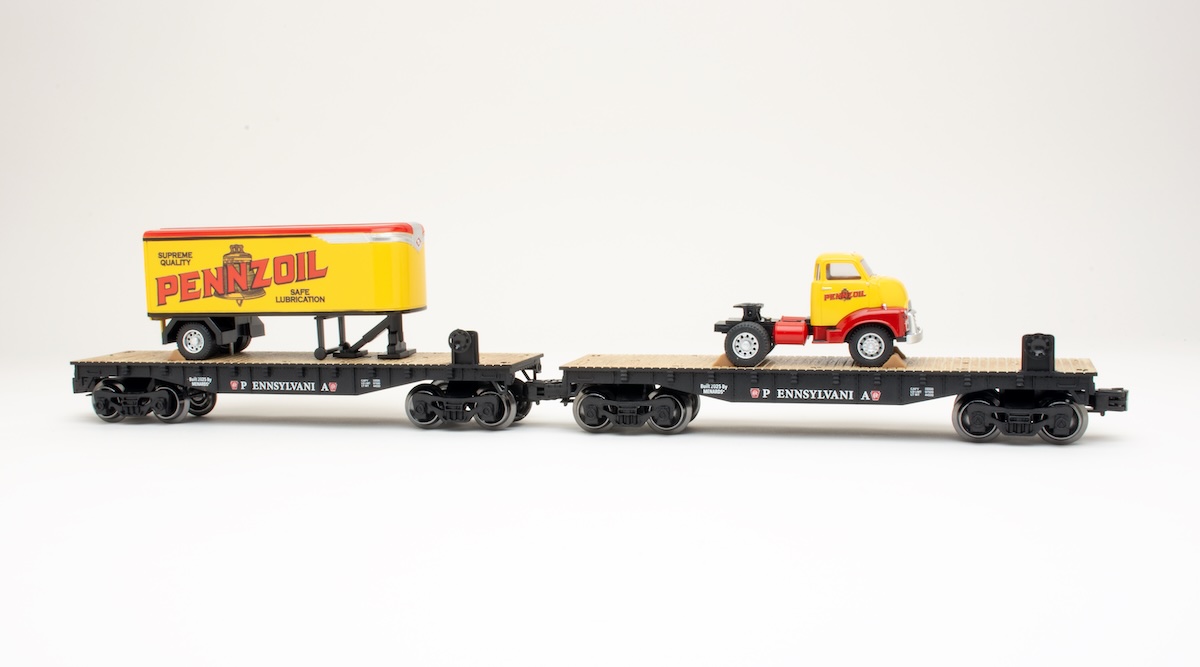Still, as they might say in an old boxing movie, it was a contender.
The 2,500-horsepower locomotive was a major success story for General Electric. GE had been dabbling in locomotive production on its own (with small switchers) and jointly with, first Ingersoll-Rand, and later, Alco.
But as times changed, the firm realized that it could probably make money by producing the complete locomotive – rather than simply supplying electrical components.
Opening the box
MTH provided two samples from its new run of O gauge U25Bs. Removing both of the U-boats from their boxes, you get the feeling of heft. For the most part, the models were the same, save for a few interesting variations.
Being able to check out two road names for the U25B was beneficial in that I could see the subtle variations of the O gauge models based upon the railroad prototypes. Nothing earth shattering, but the Santa Fe version has a rooftop strobe, a horn placed in the center behind the cab, and sunshades over the side windows.
The New York Central version has a radio antenna on the cab and a horn placed slightly to the brakeman’s side of the cab, but no sunshades.
Interesting variations when a generic model would probably have filled the bill for most hobbyists.
The pilots have multiple-unit and brake lines, as well as the uncoupler arm (yellow on the Santa Fe and black on the New York Central). The faces of the steps of the Central locomotive are accented safety yellow, while the Santa Fe steps are simply blue.
Both decks have drawbridges and gates, although the Santa Fe’s safety chain is yellow. The face of the NYC engine is all black, while the Santa Fe’s is blue – but there is a contrast with the yellow of the cab face.
The snout has marker lights, a sand filler cap, brake wheel (instead of a hand lever), and add-on grab irons. Headlights have illuminated number boards on each side. The cab has two crew figures. The cab has a large plastic shield to hide the top of the can-style motor from view.
The body has a nice level of cast-in detail. Hinges are raised. In spite of my loyalty to New York Central black, the lighter the body color the better you will see this attractive detailing.
Running along the top of the shell is additional rivet and hinge detail. The smoke unit stack is just ahead of the rear can-style motor. Above the motor, you will find a see-through screen and roofwalk over the top of the exhaust. An add-on ladder runs up the side of the long-hood end.
The screen is held on by magnets and lifts off to allow access to the battery charger, polarity control, and smoke and volume controls. The rear of the locomotive features red markers, headlights, and a second set of illuminated number boards. The side vents are also see-through screens.
The die-cast metal trucks look great in silver (Santa Fe) and very somber in black (Central). Each frame has some nice, fine-wire brake line detailing.
Painting and decoration on both road names were fine. Paint application was clean and even, and color separation was sharp.
On the test track
As mentioned, the pertinent manual controls are reached through a removable topside screen.
The model features two can-style motors, and each truck has two traction tires. The unit mounts coil couplers.
The model comes with MTH’s ProtoSound 2.0 system, which packages assorted operational capabilities and sound effects, and all functioned normally. I especially liked the GE startup sounds, which come close to what I dub the “This baby’s gonna blow” category of smile-inducing fun.
Our conventional-mode low-speed average was 4.3 scale miles per hour while our command-mode low-speed average was 3.5 scale miles per hour.
The high-speed average was 66.1 scale miles per hour.
Drawbar pull was 2 pound, 2 ounces.
The smoke unit produced prodigious amounts of the white stuff, provoking my fingers into a quick “smoke off” on the remote!
The MTH Premier line U25B has an appealing design, and it is a solid performer that salutes a staple of the early era of second-generation dieselization. This just might become a staple of many an O gauge railroad that focuses on the late 20th century.
Features: Two can-style motors, O-42 operation, smoke unit, ProtoSound 2.0, coil couplers





